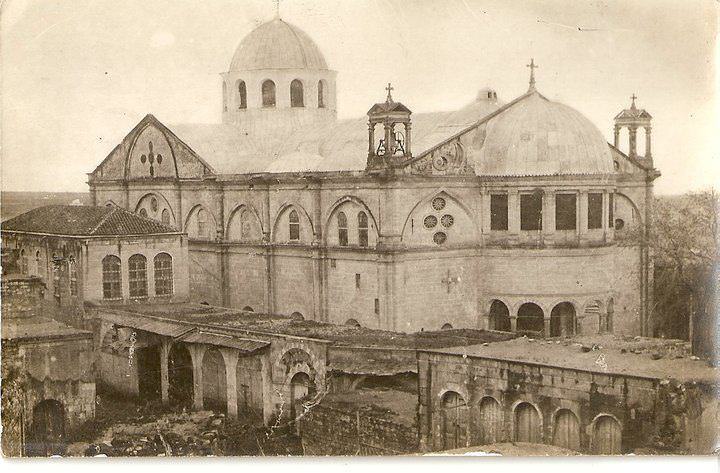Toponym
In the tablets belonging to the Assyrian period, the name ‘Ki-li-zi’ is written in cuneiform and a city named as ‘Ciliza Sive Urnagiganti’ during the Roman Empire period is mentioned. The name Kilis is first used in Arabic writings in the 10th century and is derived from the name for ‘church’.
Population
At the end of the 19 century, the population of Kilis was 20,000. Kilis then was a city in which production, commerce and cultural functions were developed. It was also a center in which agricultural products (such as grapes, cereals etc.) cultivated in nearly 500 villages around it was processed and industrial products were produced and marketed.
As in the whole Ottoman geography, members of the three major religions were living together. Culture and art were highly developed. 37 mosques, 14 small mosques, 4 Dervish Lodges, 8 madrasahs, 4 churches, 1 synagogue, 31 fountains, 5 Turkish baths, 40 coffee houses, 5 pharmacies and 5 drinking houses that were present in the city at the end of the 19th century give information about the social and cultural structure here. Poetry, music and handicrafts and especially architecture was developed.
Armenian Population
The kaza “(…) Kilis boasted 8,000 Armenians. Almost all of them were concentrated in the seat of the sancak [kaza], also called Kilis, which lay on the road to Aleppo. In the early 20th century, Kilis was a thriving town, famed for its production of tinned copper tools, textiles, and rugs.”[1] The Armenians of Kilis maintained one church and one school with an enrolment of 380 pupils.[2]

History
In the immediate vicinity of the city there are numerous Höyüks (also: hüyük), which show that the region has been settled for a very long time. The most famous and best researched is the Oylum Höyük, which was inhabited from the Neolithic until the Byzantine period.
At the end of the 11th century, Kilis was conquered by Crusaders and later fell into the hands of the Ayyubids and the Egyptian Mamluks. When the region was conquered by Ottoman Sultan Selim the Strong, Kilis was still a village. Then from 1519 Kilis was a small town with four mahalles (districts) and about 1,500 inhabitants.
Destruction
“As for the 6,000 Armenians of [the town of] Kilis whose fate was closely bound up with that of their compatriots from Ayntab, it must be pointed out that on the eve of the deportations the second in command of the Fourth Army, Fahri Pasha, also went to Kilis. There he held talks with the Armenian notables, guaranteeing the safety of their lives and property and yet, on the evening of the same day, he held ‘a secret meeting,’ in the Mevlahane, with Unionist leaders and local notables, during which the deportation of the Armenians was approved in principle, with the blessing of the CUP’s responsible secretary in the vilayet of Aleppo, Cemal Bey. Two days later, the leading Armenian personality in the city, Kevork Keshishian, was arrested on his farm and jailed in Kilis after being publicly humiliated.
It should be emphasized that the deportation of the Armenians in Kilis began on the same day as it did in Ayntab, 30 July 1915. The convoys were initially led toward the Katma railway-station, where a primitive camp had been hastily set up. Thus, the convoys from Kilis found themselves submerged in the flood of the hundreds of thousands of deportees from the four corners of Asia Minor who passed through this camp, most of them on foot, a few by rail. Around 300 people, essentially craftsmen, were allowed to remain in Kilis for some time, ‘charged with meeting the [local] needs.’ They were eventually deported in turn. The church was stripped of all its Christian symbols and ritual objects. Real estate was seized after its owners were killed under the supervision of the local Unionists, so as to make all protest impossible.
During the war Kilis earned a name for itself because of the beauty of the Armenian women abducted from the convoys of deportees and placed in the bordello reserved for Kilis’s Unionists and soldiers passing through the city. Armenian survivors from Kilis compiled a list of the 107 people who were chiefly responsible for the crimes committed in the course of the deportation and the primary beneficiaries of the despoliation of Armenian property.”[3]